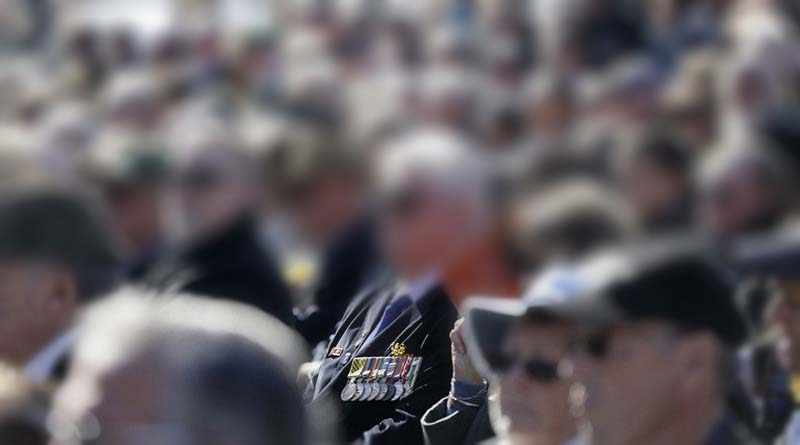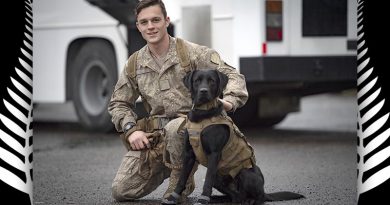New privacy rules – SCRAPPED

NEWS UPDATE: Although the minister has not sent out a press release, the ABC (and others) is reporting that the government has done a backflip on this issue and completely scrapped the section that would give the head of Defence Veteran’s Affairs the power to to disclose otherwise protected information about veterans if it was ‘in the public interest’.
The rest of the Digital Readiness Bill, without this section, is now expected to pass through the Senate.
Minister for Veterans’ Affairs Dan Tehan outlined how he says the proposed Digital Readiness Bill would provide stronger protections for veterans’ privacy, at an RSL ACT conference in Canberra today.
Mr Tehan also provided a document that set out improvements he says will protect veterans’ privacy under the Digital Readiness Bill.
“This Bill will strengthen veterans’ privacy above and beyond the current system,” Mr Tehan said
“Currently, a veteran’s personal information is covered by the Privacy Act 1988 which means the Department of Veterans’ Affairs (DVA) can release all of an individual’s information — including their medical records — and the Department does not need to contact an individual before releasing their information.
“Under the Digital Readiness Bill, only the Secretary of the DVA has the power to release an individual’s private information and the Secretary must contact the individual and provide a reasonable opportunity to respond.
“The Secretary can only correct misinformation that is detrimental or harmful to the broader veteran community and when doing so the Secretary must use anonymous information in the first instance. An individual’s specific medical information cannot be used to correct misinformation.
“Before releasing an individual’s information, the Secretary must also consider an individual’s circumstances-including health, disability, psychological and social circumstances.
“No individual’s national security or service records can be compromised under the new legislation.
“The privacy safeguards that currently exist for protecting veterans’ privacy information are less rigorous; there is not really any stick to go with them if someone decides to exploit a veteran’s information,” Mr Tehan said.
“As part of the Digital Readiness Bill, we have strengthened the privacy safeguards around how information could be disclosed.
“Under the proposed new legislation the Secretary of the DVA would face criminal sanction if a veterans’ personal information was incorrectly released.
“If you’re a Secretary of a Department and you’ve got a criminal conviction against your name, you’re going to find it very, very difficult to get employment in other departments or find work elsewhere.”
Mr Tehan earlier invited submissions on this issue.
“I welcome any further input from the veteran community and the public. Anyone who wants to have their say can email my office on minister@dva.gov.au.”
.
The following is official, unedited information from the minister’s office…
Digital Readiness: Strengthening Veterans’ Privacy
Under the current rules, the Department can release veterans’ information with reference to the Privacy Act 1988. While the Department of Veterans’ Affairs has and will always operate with privacy of information as a first priority in its conduct, the current laws do not have operating safeguards, as outlined below.
With the changes made to the Digital Readiness Bill, the Minister would set rules around a Public Interest Disclosure provision. This would put in place codified and concrete safeguards around when and how the Department uses personal information.
These changes will strengthen veterans’ privacy.
COMPARISON OF PRIVACY SAFEGUARDS
| UNDER THE PRIVACY ACT 1988 | UNDER DIGITAL READINESS |
| The Department does not need to contact the individual prior to releasing information. | When disclosing their information, the Secretary of the Department of Veterans’ Affairs must contact to the individuals. |
| The Department does not need to provide an opportunity for the individual to respond prior to release. | The Secretary must give the person a reasonable opportunity to respond, including an individual’s circumstances including age; health; disability; social, cultural or family circumstances; and any physical, psychological, national security or relevant circumstances. |
| The Department can release all of an individual’s record. | An individual’s entire record can never be released. |
| The Department can release details on an individual’s medical conditions. | No individual’s specific medical information can be used to correct misinformation. |
| The Department can provide this information to anyone it believes should have it, whether they have need for it or not. | Only people who have a genuine and legitimate interest can be provided the information. |
| The Secretary of the Department of Veterans’ Affairs has to consider an individual’s circumstances including age, health, disability, and social, cultural or family circumstances. | |
| The Secretary has to consider any physical,
psychological, national security or relevant circumstances about the individual. |
|
| The release of information has to be proportionate to the objective and to the outcome. | |
| The Secretary has to consider if anonymous or general information would achieve the same outcome. | |
| Only misinformation that is detrimental or harmful to the broader veteran community can be addressed. | |
| When used to address misinformation, the Secretary has to use anonymous information in the first instance. |
| Only the amount of information required to correct misinformation can be used. | |
| No individual’s specific medical information can be used to correct misinformation. | |
| No individual’s national security or service records will be compromised under these safeguards. | |
| An individual’s private information can never be released in order to be used to argue medical liability. | |
| Any failure to comply with the above will result in the Secretary being fined 60 penalty units and being given a criminal conviction | |
| The Secretary must take into account any comments made by the individual. |
.
.
.
.
.
.
.

.
.







